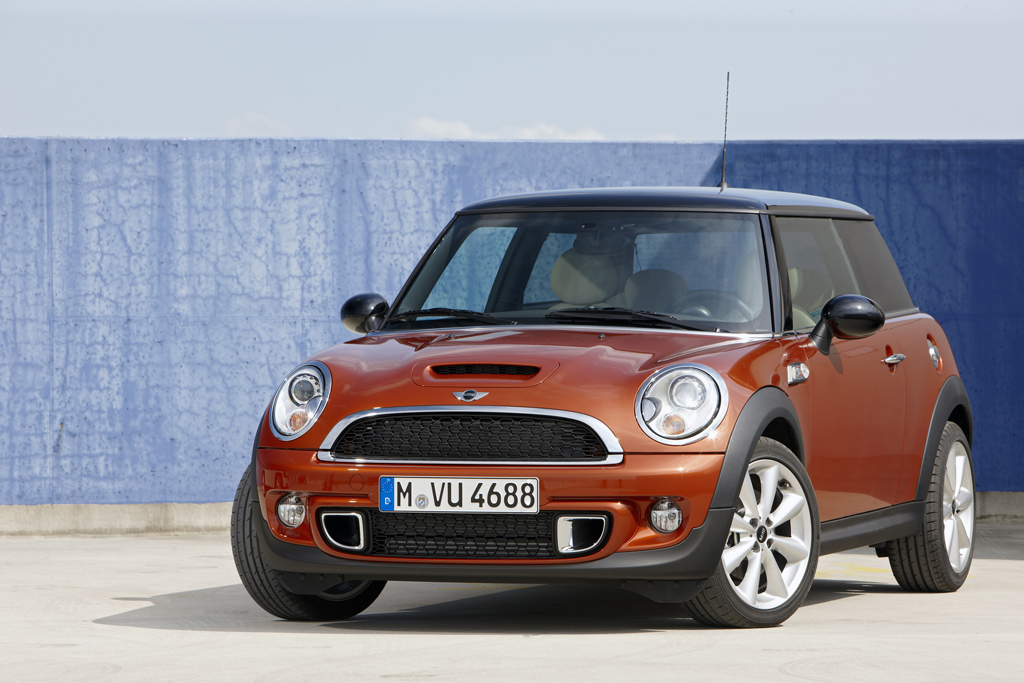After two to three years on the market, it isn’t unusual to see a manufacturer change some things about a model, no matter how successful it’s been. Such has been the case for the 2011 Mini Cooper S, which sees a host of changes inside, outside, and under the hood. We spent a week with the revised Cooper S to see what impact these changes actually made.
For a start, we have to come off as saying that we really enjoy the new front fascia, with its integrated brake cooling ducts. Set in the lower grille, these ducts look natural, while giving the MCS a more aggressive presence that is sorely needed in a car that is still called “cute.” There’s also the standard suite of new lights (we are very fond of the bi-xenon units with painted black surrounds), as well as some new wheels and color options.
The interior refresh is even more drastic than the exterior. A classy looking dark chrome, that like the new front fascia, gives the car a more aggressive feeling, has replaced much of the silver-painted trim that adorned the old car. The center stack has been seriously revised, featuring a more intuitive set of radio controls that we found far easier to use. We also had the chance to sample Mini Connected, the new infotainment system cropping up across the range (more on that in the very near future).
In terms of new options, adaptive headlights stand out as a segment first for a hot hatch. As with more expensive cars, these headlights are able to swivel left and right, granting greater visibility when traveling on dark, twisting roads. There are also the aforementioned Mini Connected and the black bi-xenon headlights, on top of the Mini’s standard suite of a la carte and packaged options.
The biggest changes, though, came with the Mini’s mechanicals. The 1.6-liter turbocharged four-cylinder sees the addition of BMW’s Valvetronic variable valvetrain, which boosts power from 172 to 181. More important than the frankly modest power increase, is the new character that Valvetronic brings to the engine. This Mini feels so much more willing to rev, with sprints up the tachometer coming on smoothly, and with a level of linearity that was lacking in the old car. It may not be significantly quicker (according to the trusty butt dyno), but it feels far more drivable and engaging than the old car.
In the end, we came away from the refreshed Mini impressed with the way it blended Mini’s hallmark agility and fun with the refinement of parent company BMW. In other words, it did exactly what a refresh should do: get us talking.


